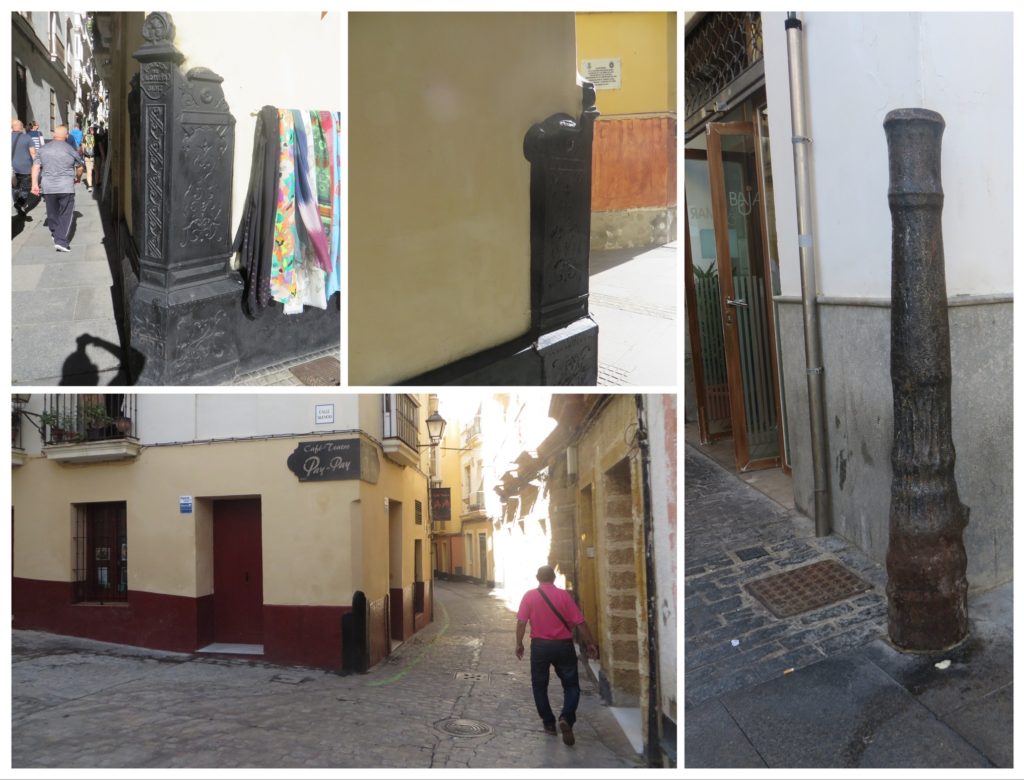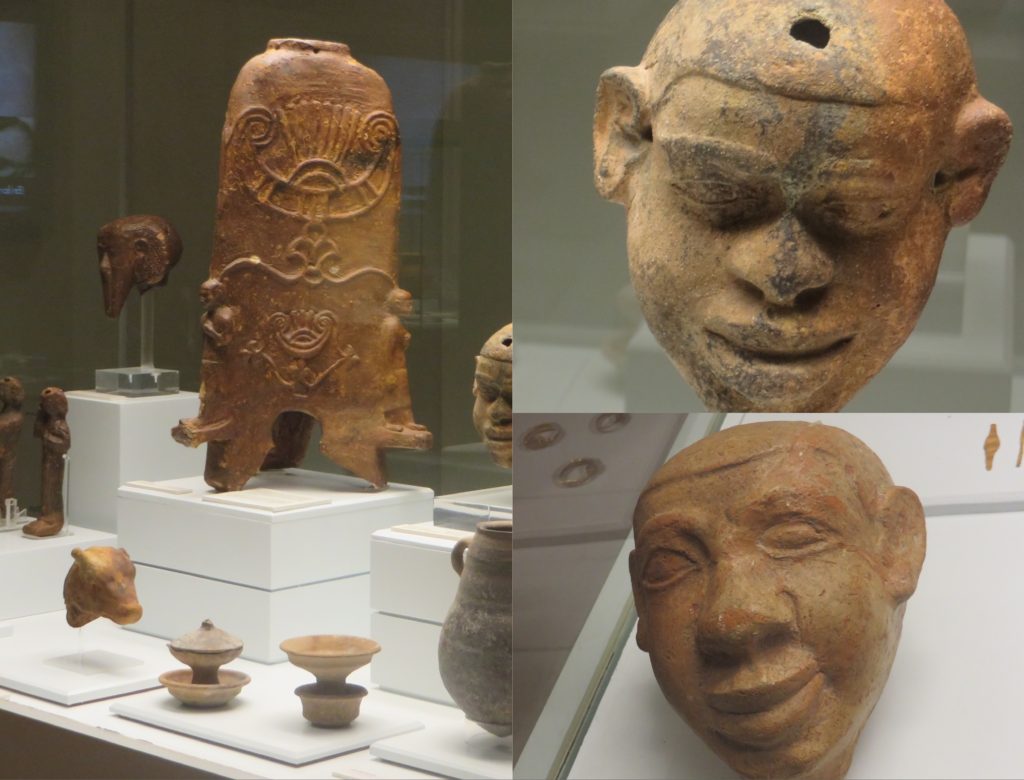Cádiz was the inspiration for this trip to Andalucia. I had never heard of it until earlier this year when I randomly came across it in a travel journal. Prepared to use up every single day of holidays available to me this year but still wanting to be warm as autumn descended on me, I thought south of Spain felt just right.

Church of Santa Cruz retains mosque features 
Jesus inside Church of Santa Cruz
Initially the plan was to go to Cádiz and just absorb my last rays of the sun doing nothing in particular. But as I read about the town and then about Andalucia in general, this curious traveller could not avoid learning about where I was headed. The history of Andalucia is just too rich.

I arrived in Cádiz on a rainy and windy day. It was raining when I left Seville via Renfe. It was raining when I arrived in Cádiz an hour and a half later. I had bought a flimsy umbrella in Seville as I was in Andalucia for sun and had not brought one with me. The winds in Cádiz laughed at the device. Drenched I walked through narrow medieval alleys trying to avoid puddles to find my hostel.


Arrival night was a food tour night. Yes! My guide called to see if I still planned to attend due to the rains. Sure I said. Turned out I was the only fool. I enjoyed her company though. A professional athlete, I found her impressive. But the rain and being solo for this tour, I can’t say I ate anything memorable. Sad.
The next day, my host recommended I take a free tour. This I did and was impressed even more with the history of Cádiz.

Cádiz, the southern-most part of Spain, was built on an isthmus so is surrounded almost entirely by water. It is generally regarded as the oldest continuously inhabited settlement in Western Europe. It is absolutely beautiful. It was founded by the Phoenicians as Gadir in about 1100 BC. During the Roman Empire, it was known as Gades. La Pepa, the first constitution of Spain, the most liberal in the world at the time, was signed here in 1812.
Cádiz is a beach town but I did not visit the beaches. Nor did I visit the modern section where hotels and high-rise apartments predominate. There’s plenty to see in the historic centre randomly walking around. There’s the Romano Teatre (Roman Theatre) whose remains were discovered in 1980 after a fire. Thought to be built in the 1st century BC it is the largest amphitheatre in the Roman empire and features in the work of classical authors like Cicero. It’s free to visit.

There are many merchant towers, more than 160, used in the past to watch for arriving ships when Cádiz too became an important port for trade during the rise of the Spanish kingdom. The highest is Torre Tavira (Tavira Tower) and from here you can use the Camera Obscura to get incredible panoramic views of Cádiz.


The Plaza de Cathedral offers great people-watching opportunities. The beautiful Parque Genovés, the excellent Museum of Cádiz, and the bustling Mercado Central (central market) were also worth a visit. The latter is the oldest covered market in Spain (1837). The museum held exhibits going back to the beginning of Cádiz including Phoenician sarcophagi and delicate jewellery.





Campo del Sur is a seafront promenade on the Atlantic side of the city whose colourful façade ensure that it is often compared to Havana, Cuba. In fact, the James Bond movie Die Another Day which was set in Cuba was actually filmed in Cádiz.

On my last night in Cádiz, I got myself an outside seat at a local restaurant. While waiting for my order, an older American woman came up to me to ask that I join her friend and herself inside. I have no qualms over solo dining, but I said sure, why not, let me be rescued out of what appears to Americans as a miserable situation. They were nice though. They were old friends who were on an extended vacation in Seville with some other friends. These two, however, had decided to pop down to Cádiz just for a bit. I ran into them again the next day at the train station, they returning to Seville, me taking a bus for the onward journey to Ronda. Yes, the bus station is on the reverse side of the train station, easy to find once you know it is there.
Cádiz was well worth the visit. It didn’t feel as touristy as other places that I have visited. A charming some-what tropical city with a rich history. When I do eventually travel someplace to just relax and immerse myself into local life, this will be it.


 A lover of mangoes. A woman - smart, without pretense, lefthanded, Afropolitan - navigating this thing called life. An unapologetic believer in social justice and karma. Choosing to radiate positive energy and be true to myself. Here, my musings.
A lover of mangoes. A woman - smart, without pretense, lefthanded, Afropolitan - navigating this thing called life. An unapologetic believer in social justice and karma. Choosing to radiate positive energy and be true to myself. Here, my musings.
Share Your Thoughts